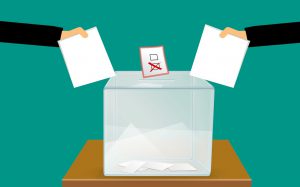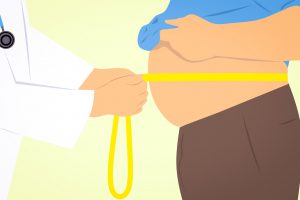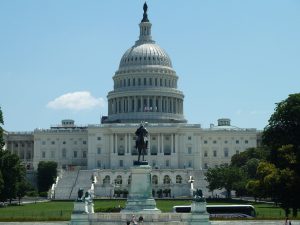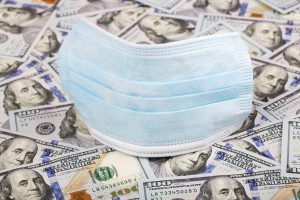Ten months into the coronavirus pandemic and we are still in the thick of things, although there is now some light at the end of the tunnel. Many states, as well as other countries, are seeing a sharp rise in cases and hospitalizations, and the U.S. has now officially surpassed 300,000 deaths from the virus. This wave of the pandemic has led to some states enforcing tighter restrictions, such as mandating a 10-day quarantine for those who travel out of state and closing down indoor dining and gyms. Fortunately, though, less than a year after the pandemic began, there are now 2 vaccines authorized for emergency use, which will hopefully be distributed to the general public soon.
Coronavirus Cases & Deaths Hit New Records
The US recorded 247,403 new coronavirus cases on December 16, a record for one day. On Thursday, December 17, The U.S. reported that 114,237 people were hospitalized, which is the highest number since the pandemic began. It is also the 6th consecutive day that the U.S. remained above 100,000 hospitalizations. The daily numbers of hospitalizations in the country for the last week were as follows:
- Dec. 17: 114,237
- Dec. 16: 113,090
- Dec. 15: 112,814
- Dec. 14: 110,549
- Dec. 13: 109,298
The nation averaged 2,569 deaths per day last week, which is the highest average we have seen to date. The total number of deaths reported on December 16 was 3,656, a one-day high. California shattered the record for highest number of COVID-19 deaths in a day in one state with 379 deaths.
COVID-19 Death Rate 3x That of the Flu
Research published last week suggested that the coronavirus causes more severe symptoms than does the flu. The study also shows that the rate of death is three times higher for COVID-19 than the death rate for hospitalized flu patients.
“Our study is the largest to date to compare the two diseases and confirms that COVID-19 is far more serious than the flu,” said Catherine Quantin from the French research institute INSERM. “The finding that the COVID-19 death rate was three times higher than for seasonal influenza is particularly striking when reminded that the 2018/2019 flu season had been the worst in the past five years in France in terms of number of deaths.”
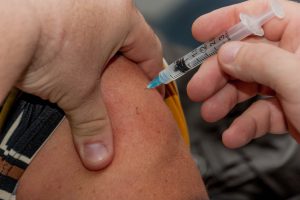
Coronavirus Vaccines Rolling Out Across U.S.
The first doses of FDA-authorized Pfizer COVID-19 vaccine have been delivered to all 50 states, less than a year after the disease was first spotted in the U.S. This vaccine was the first to be authorized in the U.S. for emergency use, with healthcare workers and residents in long-term care facilities slated to be the first to get the shot. And, on Monday, December 14, the nation watched as the first doses were injected into healthcare workers. Each person who receives the vaccine will need 2 doses approximately 21 days apart.
Then, on Friday, December 18, a week after the Pfizer vaccine got the green light for distribution, the FDA granted emergency use authorization to the Moderna coronavirus vaccine. The difference between the Moderna and Pfizer vaccines is that Moderna’s does not need to be stored at extremely low temperatures.
FDA Commissioner Dr. Stephen M. Hahn released a statement saying, “With the availability of two vaccines now for the prevention of COVID-19, the FDA has taken another crucial step in the fight against this global pandemic that is causing vast numbers of hospitalizations and deaths in the United States each day.”
Having two vaccines soon to be available to the wider public is great news, but as Dr. Peter Marks, the chief vaccine regulator at the FDA’s Center for Biologics Research and Evaluation, told a news briefing.“Our work evaluating the vaccine does not end with the authorization. And we’ve made clear we expect vaccine manufacturers to continue to study their vaccines and to move toward licensure.”
Between the two vaccines, we will have 40 million doses available for 20 million people by the end of December.
FDA Investigates COVID-19 Vaccine For Allergens
There have been some reported cases of allergic reactions in people who have received the Pfizer vaccine. Dr. Peter Marks, who heads the FDA’s Center for Biologics Evaluation and Research, is investigating what compound may be responsible for these reactions. 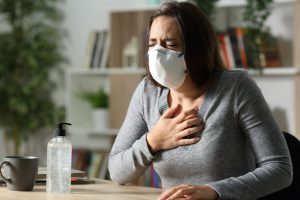
At least three cases of anaphylaxis — a severe allergic reaction — have been reported in the first week of the rollout of the Pfizer/BioNTech vaccine in the US, as well as two cases in Britain. The healthcare workers who experienced the reactions were quickly treated. Dr Marks said, “It is known that one of the components that is present in both of the vaccines, polyethylene glycol, can be associated uncommonly with allergic reactions.”
All administration sites that provide the vaccine must keep treatments, such as epi-pens, on hand for any allergic reactions.
Trial Designs Underway To Assess If Vaccine Can Prevent Carrying Of COVID-19
The Pfizer and Moderna vaccines have both been proven to reduce the risk of the disease. Moderna has stated that data suggests their vaccine can prevent asymptomatic as well as symptomatic infection.
Dr. Francis Collins, director of National Institutes of Health said that a trial is underway assessing whether the coronavirus vaccines can prevent people from carrying and spreading the virus. “There is a trial getting designed right now about how we will assess whether the vaccines actually prevent people from having any virus in their airway, because you want to know that,” Collins told CNN.

Second Round Of Stimulus Checks
Lawmakers have come to a finalization on the second round of stimulus checks. Individuals earning up to $75,000 and couples earning $150,000 in 2019 will receive a $600 check, half the value of the first round of checks issued under the Coronavirus Aid, Relief and Economic Stability, or CARES, Act. Taxpayers will also receive an additional $600 for each child under age 17. If individuals make between $75,000 and $95,000 annually, then they may be getting a portion, but not the entire $600.
According to Treasury Secretary Steve Mnuchin, checks might be rolling out as soon as next week.


